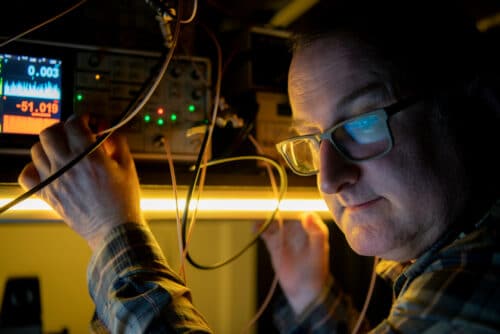Dr. Jamie Laird, a Research fellow at the ARC Center of Excellence in Exciton Science and the University of Melbourne has invented a new machine that could test perovskite solar cells for any defects. It is the first of its kind machine in the world.

Image Credit: Exciton Science/Gavan Mitchell & Michelle Gough
Perovskite solar cells are cheaper to manufacture and are more flexible. However, they are too unstable when exposed to moisture, heat, oxygen and light. Dr. Jamie’s invention aims at identifying any defects on these perovskite solar cells.
His device is a combination of a microscope and a special laser that produces pictures and maps of the defects. It shows the images of where the cells are losing their power or efficiency over use. Also, it gives exact data to indicate the reason for this loss.
“The basis of the technique is microscopy but merging it with frequency analysis,” Jamie said. “We use a laser beam and we focus on a spot and scan across the device to measure the quality of the solar cell.”
Jamie’s invention helps manufacturers to understand the issues with the perovskites and to enhance their efficiency. When he joined Exciton Science, he realized that this gadget can become a perfect tool for his colleagues. Also, it can help other solar cell researchers all over the world to understand and study the perovskite cells.
Jamie expects his invention to enable the researchers to do a complete imaging analysis of the solar cells and to understand their behavior with aging. A team from the Oxford University is already sending samples of their prototypes for testing with Jamie’s new invention.
Also, members of the University of Sydney who are working on experimental solar cells for satellites and other space vehicles are also expecting to collaborate with Jamie in the near future.








